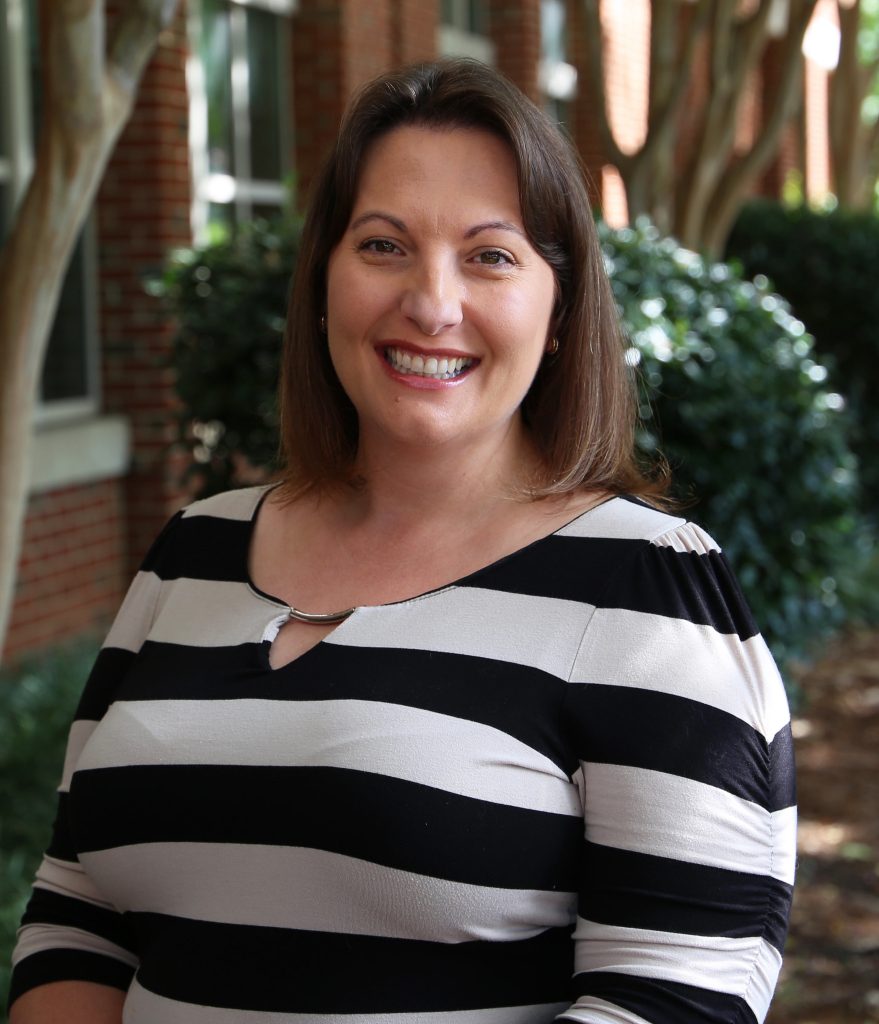When the University needed to know the movement of students through campus for COVID-19 planning for the Fall 2020 semester, ITS Enterprise Reporting & Departmental Systems developed a solution.

Groups such as the Emergency Operations Center, Emergency Management and Planning, Transportation and Parking, and Facilities Services’ Operations unit sought this information so they could ensure that Community Protective Equipment (CPE) was appropriately stocked and available and that there was enough capacity on bus routes to transport students. They also needed to be able to deploy Facilities staff to the correct locations at the right times.
ITS’ Matthew Mauzy, who serves as Emergency Response Technology Manager and ITS liaison to the Emergency Operations Center, asked Enterprise Reporting & Departmental Systems and its director, Rachel Serrano, for help. Did Enterprise Reporting & Departmental Systems’ data warehouse, he asked, contain information on the movement of students through campus. It was at least a place to start.
A challenging puzzle
As providence would have it, Enterprise Reporting & Departmental Systems (ERDS) was working closely with ITS Enterprise Applications to support the Registrar’s Office through a shuffling of classes that one could call “classroom Tetris.”
Like a game of Tetris in which you’re trying to fit various shapes and sizes into a puzzle, the Registrar needed to see the number of students in classrooms by time as well as the classroom capacity, as allowed by COVID-19 physical distancing requirements. The Registrar also needed to search classes by department or organizational unit. In addition, this information needed to be made broadly available, as student service managers across campus would need to be able to quickly access the information for their unit to make decisions about where and how to schedule classes and best assist students.
Data key to helping campus prepare
Enterprise Applications’ Maribel Carrion is Executive Director in charge of the Student Administration applications within ConnectCarolina. She served on a committee that was charged with preparing for physical distancing in classrooms for the Fall term. Committee members were constantly asking question about classes and classrooms.

“I reached out to Rachel to see if ERDS could provide a dashboard with two key views — one to let departments see where their classes were scheduled and one to let staff see what was scheduled in a room or building,” Carrion said. “The resulting dashboard was key to helping campus prepare both the classes and the classrooms for the start of Fall. We literally couldn’t have done it without the data!”
Used Tableau platform
With input from the Registrar and Enterprise Applications, the ERDS team created a flexible data model to quickly answer the questions around scheduling and then provided that data to a broad base of users via Tableau, a data visualization software platform.
When Mauzy, Carrion and others needed data, ERDS was able to extend that data model to provide the answers they requested.
What specific questions did they ask?
First, is it possible to graphically see the concentration of students in campus buildings by time? Yes! Because the facility data contains the latitude and longitude of each of the buildings, representation is simple. Not only is it possible by a static time, but it is also possible to “play” the visualization and see movement over time.
Provided insight into transit too
To enable University groups to understand transportation needs of students, ERDS added into the model a feed of student parking permit data provided by Transportation and Parking. That data helped University decision makers to understand the needs of students who would have to rely solely on public transportation, particularly given that UNC-Chapel Hill is now offering classes at the Friday Center.
It doesn’t matter if the transit system can handle X number of riders in a day if 50% of those riders all show up at one time, said Mauzy, paraphrasing Cheryl Stout, Director of Transportation and Parking. Having data to predict transportation needs by time of day to and from campus and the Friday Center enables effective resource distribution.
Next, from the same data, ERDS created a simple heat map by room. From this data, Facilities learned where to deploy its staff to ensure safety measures are maintained during student turnover.
Bonus insights supplied
The data provided unexpected insights too. One of the largest times of student turnover is noon, when Facilities staff typically schedule lunch. Seeing the student volume, Facilities staggered schedules so staff members would not be overwhelmed by the number of rooms requiring attention.
In another finding, the University learned the sanitation stations that it had set up were in rooms that wouldn’t be used much for classroom activities. As a result of gaining that insight, Carolina decision markers redeployed those stations to higher traffic areas.
Data delivered conveniently by email

Most recently, working with Mauzy, the ERDS team was able to provide the data right into decision makers’ email inbox.
Each day, facilities staff get the report for the next day’s schedule in their inbox. They’re also working with the Registrar’s Office on a “negative” report. Instead of where classes are, the report would show where classes are not. From that information, decision makers could decide where classes could continue to be scheduled as need arises or use that data for other needs.
“It’s been a great experience,” Serrano said. “Being able to answer questions with a resounding, ‘Yes, we can do that,’ and ‘Here it is!’ is so rewarding — especially when you are working with great partners and helping units that you know are overwhelmed by unprecedented need.”
Demonstrates the value of data
Serrano is happy to see more people getting involved with data, but she isn’t ready for the victory lap just yet.
This, she said, is what ERDS as a unit is trying to move toward — “building solid data design that provides multiple answers, usually to questions you didn’t know to ask until you’ve seen the data!”
Having up-to-date data enables staff to adjust to changing headcounts and class locations in advance, Mauzy said at the conclusion of the first week of classes. That means resources are used more efficiently.
“The first day of classes this past week looked different than any previous start of the semester,” he said. “And this coming Monday won’t look exactly the same as it did seven days prior.”
